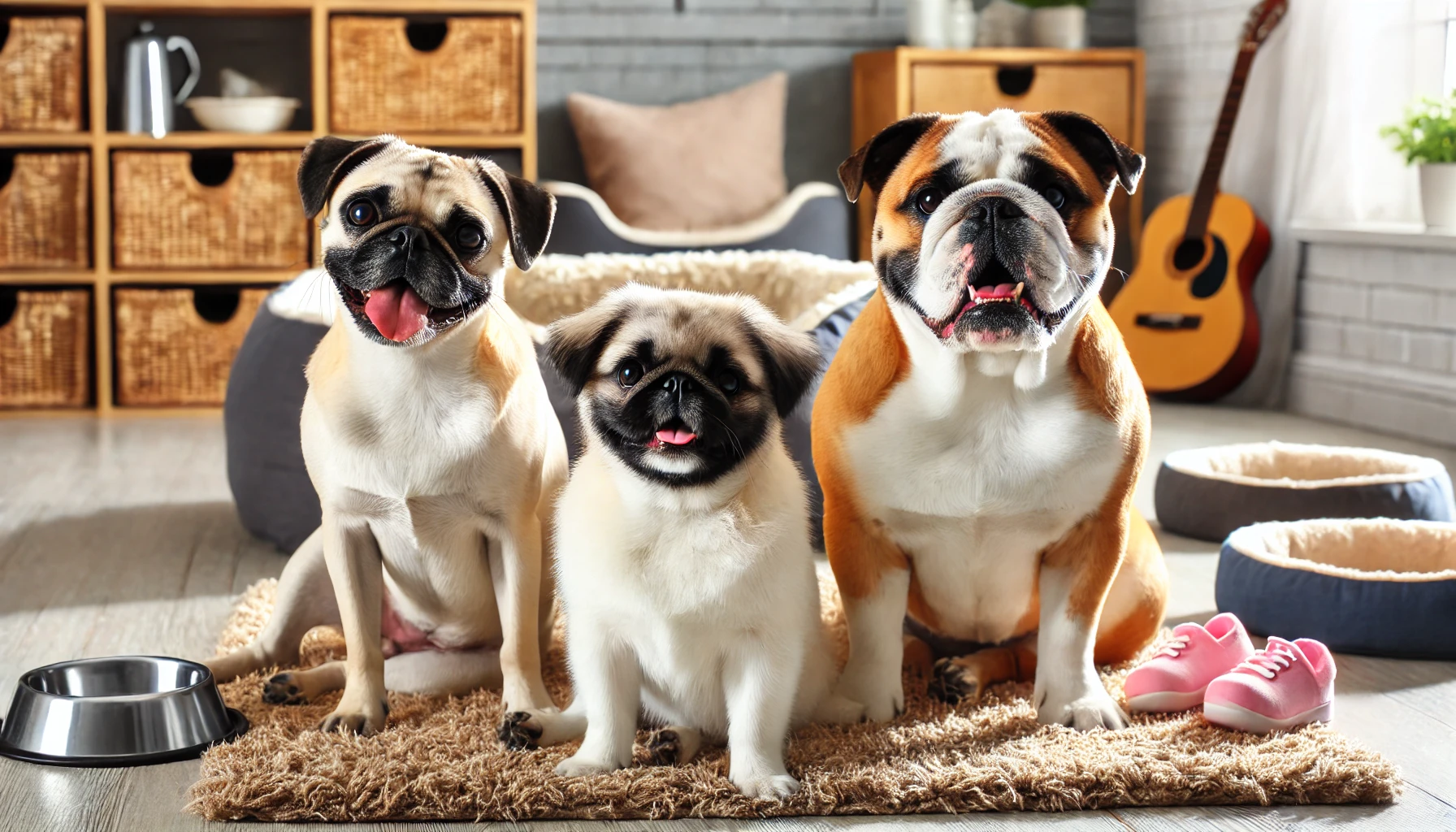Brachycephalic dogs, such as Pugs, Bulldogs, Shih Tzus, Boston Terriers, and French Bulldogs, have adorable squished faces that make them unique and lovable. However, their short skull structure requires special attention in daily care. These breeds can face breathing difficulties, overheating, and other health concerns, so it’s essential to understand their needs to ensure they live a happy and comfortable life.
In this guide, we’ll explore practical tips on how to care for brachycephalic dogs, focusing on everyday aspects like exercise, grooming, feeding, and general well-being.
1. Understanding Brachycephalic Dogs
Brachycephalic dogs have short snouts and compact skulls, which give them their characteristic appearance. However, this structure also affects their breathing, temperature regulation, and physical endurance. Because of this, they need specific care to avoid discomfort, especially in hot weather or during intense activities.
2. Avoiding Overheating and Breathing Difficulties
Brachycephalic dogs have narrow airways, making them more prone to breathing difficulties and heat sensitivity. Their bodies do not regulate temperature as efficiently as longer-snouted breeds, so overheating can become a serious issue.
✔ Avoid intense exercise—Short walks and moderate playtime are best.
✔ Keep them indoors during hot weather—Limit outdoor activities on warm days.
✔ Provide fresh water and a cool environment—Use fans or air conditioning when necessary.
✔ Monitor for heavy breathing—If your dog pants excessively, allow them to rest in a cool area.
If the weather is hot, always walk them during the early morning or late evening to prevent overheating.
3. Choosing the Right Type of Exercise
While brachycephalic breeds may not have high endurance, they still need regular, gentle exercise to stay healthy and avoid weight gain.
✔ Short walks (10-20 minutes max) instead of long or intense sessions.
✔ Indoor playtime with toys and mental stimulation.
✔ Avoid high-impact activities like jumping or long-distance running.
If you notice excessive panting, slowing down, or reluctance to move, take a break and allow your dog to rest.
4. Using the Right Collar and Harness
Because of their sensitive airways, brachycephalic dogs should never wear tight collars that put pressure on their neck. Instead, always use a comfortable, well-fitted harness that distributes pressure evenly across their body.
✔ Opt for a soft, padded harness that doesn’t restrict movement.
✔ Avoid retractable leashes, which may encourage sudden pulling and strain.
✔ Ensure a snug but comfortable fit, allowing free movement without tightness.
A harness helps prevent unnecessary strain on their throat and respiratory system, making walks more comfortable.
5. Managing Weight to Prevent Breathing Struggles
Brachycephalic dogs are prone to weight gain, which can make breathing even more difficult. Keeping them at a healthy weight is essential for their overall well-being.
✔ Feed a balanced diet with portion control.
✔ Avoid excessive treats and human food.
✔ Choose a dog food formula suited for their size and activity level.
Obesity can worsen their breathing difficulties and joint health, so maintaining a proper diet is crucial.
6. Grooming and Skin Fold Care
Many brachycephalic breeds have skin folds on their face, which require regular cleaning to prevent irritation and infections.
✔ Wipe between skin folds daily with a damp cloth or pet-safe wipes.
✔ Keep their coat clean to reduce moisture buildup.
✔ Dry their skin folds properly after baths to prevent bacterial growth.
Pay extra attention to Pugs, Bulldogs, and Shih Tzus, as their facial wrinkles can trap dirt and moisture, leading to discomfort.
7. Proper Dental Care
Because of their compact jaw structure, brachycephalic dogs are more prone to dental issues such as overcrowding and plaque buildup.
✔ Brush their teeth regularly with dog-friendly toothpaste.
✔ Offer dental chews to help clean their teeth naturally.
✔ Schedule routine checkups to monitor oral health.
Good dental hygiene prevents bad breath, gum disease, and tooth loss, which can be common in small, flat-faced breeds.
8. Keeping Their Eyes Clean and Healthy
Brachycephalic dogs often have large, protruding eyes, making them more vulnerable to irritation, dryness, or injury.
✔ Gently wipe around their eyes daily to remove debris.
✔ Avoid exposing them to dusty or windy environments.
✔ Monitor for signs of eye discomfort, such as excessive tearing or redness.
Since their eyes are more exposed, small particles can easily cause irritation, so regular cleaning helps prevent issues.
9. Providing a Comfortable Sleeping Area
Because of their breathing patterns, brachycephalic dogs may have difficulty sleeping comfortably.
✔ Provide a soft, supportive bed that allows them to rest with their head slightly elevated.
✔ Choose a quiet, cool sleeping area to prevent overheating.
✔ Monitor their sleeping position—some dogs breathe better when sleeping on their side rather than flat on their stomach.
A good-quality orthopedic bed can help support their joints and prevent discomfort, especially for older dogs.
10. Traveling Safely with a Brachycephalic Dog
Traveling can be stressful for brachycephalic dogs, as poor ventilation or extreme temperatures can make breathing difficult.
✔ Avoid long trips in hot weather and ensure proper air circulation in cars.
✔ Use a well-ventilated travel carrier if necessary.
✔ Take breaks during car trips to allow them to drink water and cool down.
Some airlines have restrictions on brachycephalic breeds due to their breathing concerns, so always check airline policies before flying with your pet.
Final Thoughts
Caring for a brachycephalic dog requires extra attention to their breathing, weight, and hygiene, but with the right care, they can live a long and happy life. These breeds are affectionate, playful, and loyal companions, making them wonderful pets when their needs are properly met.
✔ Keep their weight in check to avoid additional breathing difficulties.
✔ Provide gentle, short exercise sessions rather than intense activities.
✔ Use a harness instead of a collar to prevent pressure on their throat.
✔ Regularly clean their skin folds and eyes to prevent irritation.
✔ Provide a cool, comfortable environment to avoid overheating.
By following these care tips, you’ll ensure your brachycephalic dog stays healthy, happy, and comfortable in their daily life.
